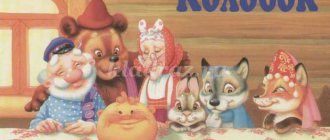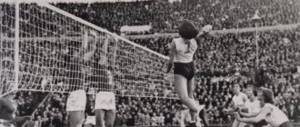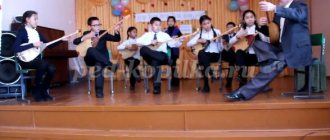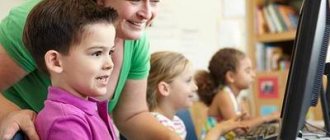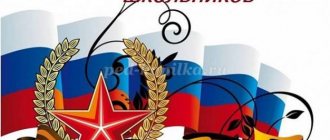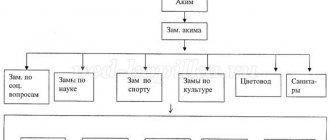General recommendations for completing an applicant’s application form
There is no single standard resume template, but there is a generally accepted structure that allows you to place comprehensive information about the candidate on A4 sheet in a concise and succinct form to create a teacher’s resume.
The resume header includes your full name, purpose, age and place of residence.
To ensure that the employer has a complete picture of the applicant, attach a photograph to the application form. According to statistics, employers look more closely at resumes with photos. For a teacher, a business photograph would be suitable, which would present the candidate as a neat, organized person, capable of becoming an example for children in everything, even in the ability to present oneself and the manner of dressing.
The image of a teacher is the image of a person who is emphatically serious and responsible.
Therefore, a teacher’s resume needs to write information correctly, concisely, in a classic style, without unnecessary creativity.
Description of work experience in a resume for a physical education teacher
To get a job in a professional resume sample for a physical education teacher, it is important to talk in more detail about work experience, listing functional responsibilities, and highlight personal and business qualities.
The requirements for this profession are quite high:
having a higher education, the ability to provide first aid, the talent to organize a lesson in such a way as to captivate and interest students. And the teacher must be able to be an authority, a model for students.
In the " Work Experience"
» the schools where the candidate worked are indicated and job responsibilities are described. A separate subsection lists achievements indicating professional growth.
Example of filling out the “Work Experience” section
- Period:
09.2012 - present V. - Organization:
Lyceum No. 118
- Job title:
Physical education teacher
- Responsibilities:
— Physical education of students; — Monitoring the physical development of children; — Coach of the school basketball team; — Organization and preparation for competitions — Document management.
- Achievements (over 2 years):
- Letter of gratitude from the Department of Education of the Moscow City Hall - Letter of gratitude from the Ministry of Education of the Russian Federation - Finalists of the VSOSH (municipal) - 5 people.
If you have no work experience
A successful teaching career for a physical education teacher largely depends on personal qualities and teaching style. The teacher’s job responsibilities include not only conducting physical education lessons, but also educational work, organizing competitions and clubs, keeping journals, and participating in teacher councils. Therefore, employers prefer to hire the most conscientious and experienced candidates.
If you have little experience, a functional resume, which is based on knowledge and skills, is preferable to find a job. University graduates should describe in detail in the questionnaire the knowledge and skills acquired during practical training. The advantage of young teachers will be the desire to learn and develop.
Work experience of a physical education teacher, material on physical education on the topic
The theme of the experience is “Organization of the educational process aimed at preserving and strengthening the health of students and developing an attitude towards health as a personal value, through the introduction of health-saving pedagogical technologies and based on individual development.”
Teaching experience – 18 years.
Educational institution graduated from, graduation date –
Volgograd Institute of Physical Culture, 1996.
Category – first.
Since what year has he been working on the problem: since 2003 “Organization of the educational process aimed at preserving and strengthening the health of students and developing an attitude towards health as a personal value, through the introduction of health-saving pedagogical technologies and based on individual development.”
What generalized materials represent the experience:
2003 – “Development of motor activity in physical education lessons” (speech at the city methodological association of physical education teachers).
2004 – open lesson “Ski training” (within the framework of the educational program for physical education teachers)
2006 - open lesson “Ski training” (within the framework of the educational program for physical education teachers)
2007 - “The use of technical means at the preparatory stage of training ski racers” (speech at the city methodological association of physical education teachers).
2008 – “Repair and preparation of ski equipment” (speech at the city methodological association of physical education teachers).
2008 – master class “Game techniques in martial arts lessons” (as part of the educational program for physical education teachers).
2008-2011 - organization and holding of open competitions in national wrestling on the basis of the Municipal Budgetary Educational Institution "Lyceum - Boarding School No. 79".
Emergence of experience
My work experience as a physical education teacher is 18 years. Since 1998, I have been working to introduce health-saving technologies into practice, which I modernize in accordance with the requirements of the time.
My experience is due to the following reasons:
- deterioration of children's health;
— reducing class sizes;
— physical inactivity;
— weak material and technical base.
At school in the educational field “Physical Education”, students are provided with the development of the ability to carry out their own physical education, recreational and sports-creative activities both in physical education lessons and in extracurricular hours - in the afternoon, on weekends and holidays, in the summer.
Relevance of experience
Modern physical culture performs important social functions to optimize the physical condition of the population, organize a healthy lifestyle, and prepare for life practice. It, like any sphere of culture, involves, first of all, working with the spiritual world of a person - his views, knowledge and skills, his emotional attitude, value orientations, his worldview and worldview in relation to his bodily organization. One of the main reasons that physical culture is not always a basic human need is the shift in emphasis during its formation to motor components to the detriment of intellectual and socio-psychological ones. Consequently, it is necessary to take a different look at the problem of the formation of human physical culture, at its theoretical foundations, because this is required by the modern conditions of the development of our society. After all, the value of physical culture for the individual and the entire society as a whole, its educational, educational, health-improving and general cultural significance lies precisely in the formation of a healthy lifestyle, the development of bodily and spiritual strength.
The result of many years of work of any physical education teacher, undoubtedly, is the full physical development and health of students. The content of the subject “Physical Education” is aimed at developing values related to the formation of a healthy lifestyle, physical improvement of the body, as well as the rejection of negative manifestations that exist in the lives of young people, including bad habits. Not only to preserve the health of students, but also to instill the basics of a healthy lifestyle is the main task of the teacher. That is why this topic is becoming more relevant than ever, and the teacher’s field of activity is expanding significantly.
Contradictions and difficulties encountered in mass practice:
— between the theoretical knowledge students have and a weak material and technical base;
— between the need to develop strong knowledge, skills and a healthy lifestyle are successfully resolved in this experience.
Leading pedagogical idea of the experience:
Creating conditions in physical education lessons for conscious active participation of students in sports activities that bring the joy of overcoming, the joy of achieving the goal.
Technological aspect of the experience
“Organization of the educational process aimed at preserving and strengthening the health of students and developing an attitude towards health as a personal value, through the introduction of health-saving pedagogical technologies and based on individual development.”
Teacher's personal concept:
— search for active forms and methods of developing strong knowledge, skills and abilities of students;
— inclusion of each student in active motor activity;
— creating an atmosphere of cooperation, empathy, and mutual support in physical education lessons.
Basic methods:
- Diagnostics
- Frontal
- Flow-group
- Testing
- Interactive
Forms of organization and types of lessons:
- Lesson game
- Lesson-competition
- Lesson-tournament
- Integrated lesson
Conditions:
- Personality-centered approach to learning
- Competence-based approach
Result:
- Increased level of physical activity and independence of students
- Intensifying extracurricular activities of schoolchildren
- Improving student health
Over the years of my teaching activity, I have realized that the best educational results are obtained when you rely on the success of the student. After all, this success is always associated with feelings of joy, with emotional uplift. Children who have successfully completed some useful task develop confidence in their own abilities and a desire to achieve good results in order to experience the joy of success again.
Realizing this helped me at one time to make for myself the starting point of working with children the basic principle of teaching and upbringing - every child has abilities that need to be found and developed. This is exactly what I do.
During my teaching work, I have developed my own system of forms, methods and techniques of teaching, which gives positive results. Having mastery of traditional techniques and methods of teaching the subject “Physical Education”, I use active forms of learning: design, problem-based lectures, elements of advanced pedagogical technologies.
The goal of physical education in our lyceum is for schoolchildren to master the basics of personal physical culture, which means the organic unity of knowledge, needs and motives, the optimal level of health, physical development, and motor abilities.
The essence of the technology with which I work lies in the personally oriented nature of education, an individual approach to each child when organizing physical education classes, and in the formation of a conscious need for physical education, sports and creative activities. This means that an individual educational trajectory has been created for each student, which takes into account individual body type, physical fitness, health status, as well as characteristics of mental development. Knowing the characteristics of the physical development of children, I build physical education classes on individualization and differentiation of training. I offer the children exercises of varying degrees of difficulty, giving them the opportunity to gradually master the necessary skills.
At the second stage of education, in addition to the development of physical qualities, I begin an in-depth study of motor skills, develop skills of self-esteem and self-control when performing exercises. In the process of educational activities, I introduce different types of lessons, forms of their implementation, and comprehensively use frontal, group, and individual forms of work. I have compiled sets of physical exercises for each student, taking into account the level of his physical development.
The third stage of education is the period of training muscle strength, endurance, as well as the time of acquiring theoretical knowledge in the subject “Physical Education”. At this stage of studying the subject, I differentiate physical activity according to gender, psychological, and physiological characteristics.
Studying the subject “Physical Culture” presupposes, in addition to mastering practical skills, knowledge of theoretical foundations, as well as possession of information about the physical culture and sports movement on the scale of a district, region, and country. At each lesson I conduct informational conversations, and at the end of the school year at the II and III levels of education - an exam on the theory of physical education.
Student performance results for the last 3 years:
| Academic year | Number of students children | Classes in which the teacher works according to the tariff | Subject performance (in%) | Number and % of students achieving “4” and “5” |
| 2008-2009 | 252 | 7-11 | 100% | 94% |
| 2009-2010 | 258 | 7-11 | 100% | 91% |
| 2010-2011 | 254 | 7-11 | 100% | 93% |
I pay a lot of attention to extracurricular activities, organize health and sports days, and hold school competitions.
The school has had sports sections and
mugs: “National wrestling” “Arm wrestling”,
I have a creative approach to both learning problems and their implementation. I am concerned about strengthening the material and technical base. Based on knowledge of modern technologies for preparing ski equipment and my own experience, I developed a technology for preparing and processing skis without special financial costs.
Developed a set of exercises for morning exercises aimed at strengthening the muscular frame of the spine, muscles of the arch of the foot, general strengthening and breathing exercises. Daily morning exercises made it possible to significantly increase the daily physical activity of students. The percentage of healthy children over the past ten years has increased from 45% to 67%.
Systematic physical education and sports classes at the lyceum contribute to the fact that the lyceum did not close for quarantine during periods of exacerbation of the O.R.Z epidemic.
Developed the program “For a healthy lifestyle”. The result of activities within the framework of this program is indicators of students’ general physical fitness. Every year I conduct a comprehensive examination of the physical development and motor activity of children.
Generalization of teaching experience in the field of physical education, health, sports and creative activities allowed me to create a methodological basis for monitoring research in the field of development of physical education and sports. The resulting analytical materials are structured into tables, diagrams, scales, examinations, descriptions, etc.
The experience of teaching allows us to identify such trajectories of monitoring research as:
1. Assessment of the quality of academic performance in the subject “Physical Education”. To evaluate and track results, a package of statistical documents approved and recommended by the Ministry of Education and Science of the Russian Federation is used.
2. Comparison of student indicators in various sections of physical education with State Standards standards.
3. The effectiveness of the physical culture and health activities of the educational institution, measured through studying the attitude of children to physical education and sports, to a healthy lifestyle through testing and questioning of schoolchildren and their parents.
4. The effectiveness of sports and creative activities of educational institutions, assessed through the study of the conditions and lifestyle of students, the attitude of all participants in the educational space towards sports, recreational and sports and creative activities.
5. Assessing the level of satisfaction of students and their parents, graduates of previous years, teachers, social partners with the state of sports and physical education work of the school.
6. Analysis of the employment of students, teachers and parents in sports sections at the lyceum and beyond, as well as in student co-government bodies.
7. Pedagogical examination of methodological materials on the problems of health conservation and health formation of schoolchildren, the development of physical culture and sports.
I use information and communication technologies and INTERNET resources in my activities. Students create presentations with interest highlighting the school’s sports life.
Thus, this work helps me and my students achieve our goal through joint efforts. I see the main task: raising a physically developed personality through my subject.
I believe that this experience can be used in their work by physical education teachers working in grades 7-11 in any program at the stages of training, generalization and systematization of knowledge, and also as a form of control.
Using this experience, sustainable results can be obtained under the following conditions:
1. The work must be carried out systematically.
2. The role of motivation for action is important, understanding what children will learn in the process of work.
3. Tasks must be feasible.
4. Novelty is an important condition for increasing student interest.
Filling out the “Education” block
To obtain a job as a physical education teacher, a higher education diploma in the relevant specialty is required. Secondary vocational education is not sufficient for this position. This section indicates the place of study, year of graduation, and specialty.
Example of a block on basic education:
- Specialist:
MPGU - Faculty:
Athletics
- Speciality:
Physical education teacher
- Year of ending:
2007
Professional courses, trainings and seminars help teachers acquire new knowledge and skills and increase their level of competence.
If additional education is directly related to the position of a physical education teacher, the certificate received will serve as a bonus when hiring.
The employer will get the impression of the candidate as a person who follows new trends in the professional field and strives for development and knowledge.
Sample of filling out the block on additional education:
- Year of ending:
2016 - Name:
Problems of physical education in modern conditions of educational development
- Conducting organization:
MIOO
- Year of ending:
2012
- Name:
Conditions for the implementation of health-saving technologies
- Conducting organization:
MIFiS
Skills in a physical education teacher's resume
The skills section indicates professional knowledge and skills acquired in previous jobs, as well as 4-6 personal qualities that correspond to the applied vacancy.
The character traits of a candidate are carefully considered by many employers. Such qualities will be positively assessed
, such as love for children, organizational skills, communication skills.
Don't repeat the mistakes of most job seekers by filling out your resume with formal information. Professional skills of a physical education teacher:
| Federal State Educational Standard | Pedagogical standards |
| pedagogy and psychology | Athletics |
| Ski training | Basketball coach |
| Sports medicine | Organization of events |
| Open lessons | Extracurricular activities |
| GTO | Preparing for school Olympiads |
| Programming | Sport sections |
| School documentation | PC user |
The professional skills of a physical education teacher are largely determined by his abilities for teaching, which are divided into the following groups:
- Didactic abilities are the ability to convey educational material, making it accessible. The teacher must present educational material clearly and understandably for a specific group of students, arousing their interest in the educational subject, stimulating their activity and independence in educational activities.
- Academic abilities are abilities in the relevant field of science (academic subject). A capable physical education teacher knows his subject not only within the scope of the curriculum, but also much wider and deeper. He strives to learn the latest discoveries in the field of scientific knowledge in his subject, and he himself conducts research work.
- Perceptual abilities are the ability to penetrate into the inner world of a student, this is psychological observation associated with a subtle understanding of the student’s personality and his mental state.
- Speech abilities are the ability to clearly and clearly express your thoughts and feelings through speech, facial expressions and pantomime. At the same time, it is important for the teacher to show strength, conviction and interest in what he says.
- Organizational skills are the ability to organize students, form their team, and inspire students to solve educational problems. In addition, this is the ability to organize one’s own activities.
- Authoritarian abilities are the ability to directly exert authority on students through emotional and volitional influence.
- Communicative abilities are the ability to communicate with students, the ability to find the right approach to them, establish close contacts, and establish relationships with them that are appropriate for carrying out teaching activities.
- Pedagogical imagination is the ability to foresee the consequences of pedagogical activity: to predict the development of certain qualities in students, predicting what may “come out” of students.
- Attentional abilities are the ability to distribute your attention between several types of activities at the same time. The teacher needs to monitor the content and form of presentation of educational material, developing his thoughts, keeping all students in the field of attention, responding to signs of fatigue, inattention, misunderstanding on the part of students, noting violations of discipline, and monitoring his own behavior. And this is not a complete list of objects to which the teacher should distribute his attention.
These abilities lie in the teacher’s ability to reconstruct and adapt educational material, to make difficult things easy, difficult things to be simple, and unclear things to be clear;
Physical Education Teacher Skills
Skill is practical knowledge of ways to perform individual actions or activities as a whole in accordance with the rules and purpose of the activity.
The skills of a physical education teacher are divided into constructive, organizational, communicative (including didactic and oratorical), gnostic (including perceptual) and motor (including applied).
Constructive skills help the teacher plan his activities.
These include the skills to: select and construct educational material (for example, create a set of exercises to develop students’ responsiveness or attentiveness), carry out long-term and current planning, plan the acquisition and repair of sports equipment and equipment. The ability to adjust plans is especially valuable.
Organizational skills are associated with the implementation of planned plans. For example, a teacher can write a good summary of a lesson, but conduct the lesson itself poorly, because he will not be able to organize work in the class. On the contrary, a student, having imperfect knowledge of the methods of conducting a lesson, can, due to his organizational abilities and skills, conduct a lesson well.
The teacher must be able to organize his activities and the activities of his students. It doesn't work out the same for different teachers. Teachers with inertia of nervous processes, who slowly switch from one situation to another, are distinguished by a high level of personal organization. They know how to organize their working time well, choose their location correctly in the gym during class, and skillfully use well-prepared students as assistants. Teachers with mobility of nervous processes have a wider range of organizational skills, they are more active in organizing the activities of students, well organize the work of sports sections at school, sports competitions and holidays, relay races and outdoor games in the classroom.
A teacher’s ability to communicate with students, work colleagues, parents, and find rational ways to interact with others are all communication skills. Such skills are conventionally divided into three groups: communicative, didactic and oratory. Actually communicative skills are expressed in the ability to come into contact with people and build relationships with them.
Didactic ones are associated with the teacher’s skills to clearly and intelligibly convey educational material to the consciousness of students. Didactic skills include the ability to arouse interest in physical exercise, convey one’s passion to students, manage the attention of a study group and predict the consequences of one’s pedagogical influences. Oratory skills are ensured, first of all, by the culture of speech, which every teacher should strive to master.
Gnostic skills are associated with the teacher’s knowledge of both individual students and the class as a whole; with an analysis of pedagogical situations and the results of their activities. Gnostic skills are based on perceptual abilities: the ability to observe, notice. They include the ability to use educational, methodological and scientific literature, and the ability to conduct basic research, analyzing their results.
Motor skills reflect, first of all, the teacher’s technique of performing physical exercises. The correct demonstration of one or another physical exercise included in the training program determines the effectiveness of schoolchildren’s educational activities. The motor skills of a physical education teacher also include the skills and abilities of performing belays, a number of applied skills necessary when repairing sports equipment and equipment, on hiking trips, etc.
Physical education teacher knowledge
Knowledge is one of the factors that determines a teacher’s capabilities in his teaching activities. A. S. Makarenko said that students will forgive their teachers for severity, dryness, and even pickiness, but they will not forgive poor knowledge of their field. This is especially true for high school students, who evaluate a teacher not only and not so much by his communicative qualities (the ability to communicate, get into contact with people), but by his professional qualities.
The erudition of a physical education teacher consists of general and special knowledge.
General knowledge (socio-political, as well as literature, art, history, etc.) characterizes the worldview and general culture of the teacher. The special knowledge necessary for a physical education teacher to carry out his physical education and pedagogical activities can be divided into psychological-pedagogical, medical-biological and physical education.
All knowledge is equally important, and neglecting the basics of anatomy, physiology, psychology, and pedagogy can lead to serious pedagogical errors. A survey of experienced physical education teachers showed that the most significant for their professional activities, along with the theory and methods of physical education, are psychology and physiology. Poor erudition in social science, art history and other issues can lead to a teacher losing authority in the eyes of students.
The special knowledge possessed by a physical education teacher can be divided into theoretical, practical and methodological.
Theoretical knowledge relates to the history of physical culture, patterns of functioning of the human body, biomechanical patterns of motor actions, principles of education and training, etc. This is knowledge that is needed for explanation and is associated with the question “why?”
The practical knowledge of a physical education teacher concerns, first of all, knowledge of how to do this or that exercise. For students of the Faculty of Physical Education, this is the basic knowledge that they acquire in practical classes and during classes in sports specialization.
Methodological knowledge also makes it possible to answer the question of how to do it, but it no longer relates to one’s own execution of the exercise, but to the students’ execution of it. It is knowing how to teach another.
Often, students of the Faculty of Physical Education observe an identification of practical and methodological knowledge: they believe that since they know how to do an exercise and know how to do it, then they will be able to explain to students how this exercise should be done. In reality, teaching others is a special section of physical education pedagogy, a physical education methodology that must be mastered carefully and patiently, since not everyone has the experience of their own sports activities and does not immediately transform into the experience of teaching others.
The organizational activity of a physical education teacher in the classroom is one of the leading ones; it consists of putting into practice the teacher’s projects (plans). This is “the activity of one person mobilizing, coordinating, interacting and interrelating together with an active group of people.”
Organizational activities manifest themselves in various ways:
firstly, in the teacher’s speech (when explaining the objectives of the lesson and exercises, giving commands and orders, summing up the lesson, etc.);
secondly, in the behavior of the teacher:
- in choosing a place to teach a lesson;
- in expedient movements around the hall for the purpose of leading the class, monitoring the implementation of exercises, providing assistance and insurance;
- in the uniqueness of disciplinary influences on students;
- in preparing places for classes and the necessary equipment;
- in organizing the placement and cleaning of shells, distributing equipment;
- in regulating the optimal motor density of a lesson depending on its type;
- in regulating physical activity for each student;
thirdly, in managing student activities:
- in building and rebuilding on the spot and in motion;
- in choosing ways to perform exercises;
- in enhancing the cognitive activity of students;
- in organizing the assimilation and memorization of educational material;
- in testing and assessing students' knowledge and skills.
Organizational activities can be carried out differently by different people, differing both in the characteristics of the organizer’s influence on those being organized and in the dynamics of the organizational activity itself. For example, L.I. Umansky, who studied the abilities of 342 organizers, identified 18 typical organizational personality traits.
The communicative activity of a physical education teacher in the lesson is expressed in his communication with students, organizing relationships between them, establishing and maintaining contacts, exchanging information, organizing relationships between members of the same team department.
The communicative activity of a physical education teacher is manifested:
- in forms of teacher’s address to students;
- in the tone of address;
- in the intensity of communication (number of contacts per unit of time);
- in the motives of communication.
During the lesson, the teacher uses both verbal (verbal) and non-verbal means of communication: expressive movements (gesture, facial expressions, pantomime) as stimulating information. Their correlation depends on objective conditions, specific situations of activity in which the communication process takes place. Communicative activity as an organizational activity is a practical activity. Contacts between the teacher and students during the educational process assume that, on the basis of the information transmitted by the teacher, schoolchildren develop knowledge, skills and abilities.
Pedagogical orientation is a person’s sustainable desire to engage in teaching activities.
The pedagogical orientation of a physical education teacher is formed on the basis of two motivational formations: the so-called “love for children” and interest in physical education (unfortunately, there is no need to talk about the presence of the third – the prestige of the teaching profession).
V. A. Sukhomlinsky attached great importance to it, emphasizing that one cannot learn to love children in any educational institution or from any books. Of course, the expression “love for children” should not be taken literally. When they talk about it, they most likely mean a sensitive and attentive attitude towards each child, including those who cause grief to the teacher with their behavior and academic performance. This is the presence of a feeling of satisfaction, joy from communicating with children, from penetration into the peculiar children's world, the psychology of the child. Love for children is not sentimentality, not kindness, not all-forgiveness. Love for children is transformed into an interest in working with children, into a desire to make them educated, physically and spiritually developed.
Interest in physical education is the second main motive that shapes the pedagogical orientation of a physical education teacher. The sports orientation of boys and girls involved in sports should awaken interest in physical education and teaching activities, the desire to make other people, in particular children, strong, vigorous, healthy.
The focus of a physical education teacher on his work is expressed in his passion for it. She becomes the meaning of his life. This leads to two consequences. On the one hand, love for their work forces a teacher to constantly improve his skills, take an interest in the work of his colleagues, provide assistance to them, and choose what is useful for his work, that is, to be an active creative worker. On the other hand, students, if they feel that classes with them are not a heavy duty for the teacher, but a pleasure, reciprocate. A. S. Makarenko said that it is easy to educate if you devote your whole life to it.
Therefore, teachers who are masters of their craft show greater satisfaction with their profession.
Responsible for information: Kolotilshchikova S.V., methodologist of the State Medical Center for Dog and Medical Sciences.
